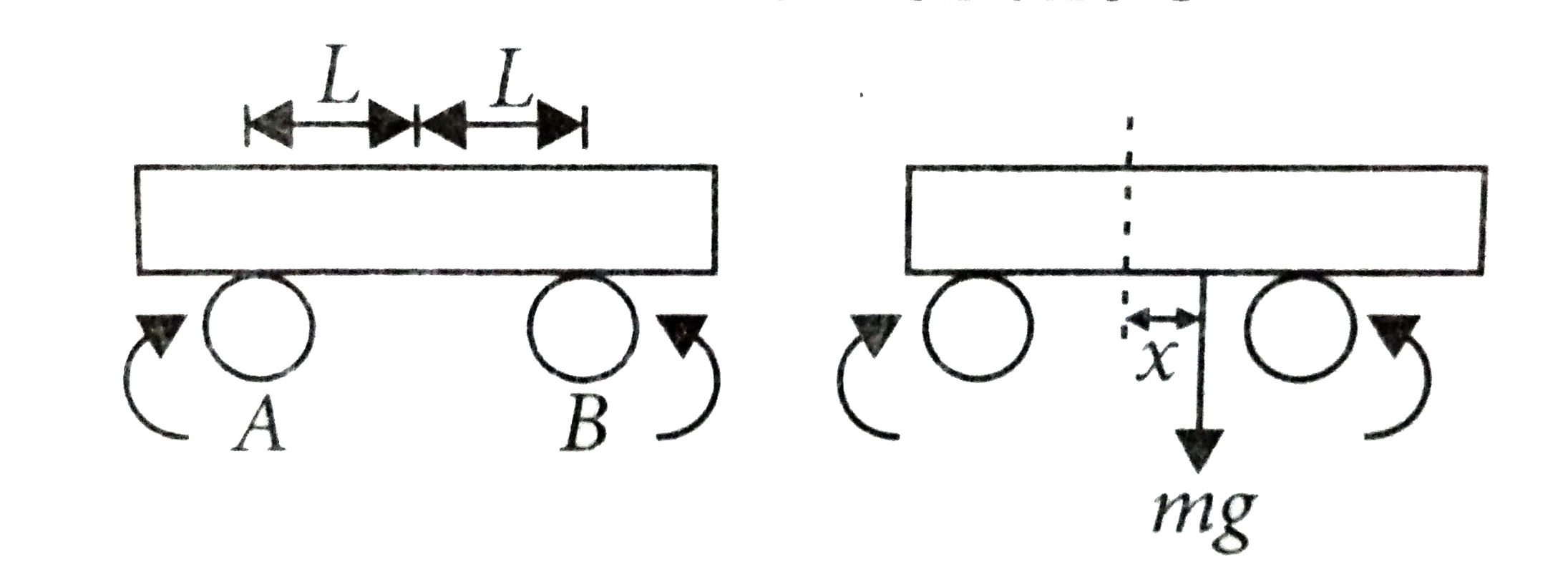Sample Problem from RESNICK AND HALLIDAY PHYSICS (HINGLISH) OSCILLATIONS for Class 12
| Class 12 | PHYSICS |
| Chapter | OSCILLATIONS |
| RESNICK AND HALLIDAY PHYSICS (HINGLISH) | Sample Problem |
| Medium | English |
| Academic Year | 2023-2024 |
Question 1
A block whose mass m is 680g is fastened to a spring whose spring constant k is 65N/m. The block is pulled a distance x=11cm from its equilibrium position at x=0 on a frictionless surface and released from rest at t= 0.
What are the angular frequency, the frequency, and the period of the resulting motion?View SolutionQuestion 3
A block whose mass m is 680g is fastened to a spring whose spring constant k is 65N/m. The block is pulled a distance x=11cm from its equilibrium position at x=0 on a frictionless surface and released from rest at t= 0.
What is the maximum speed vm of the oscillating block, and where is the block when it has this speed?View SolutionQuestion 4
A block whose mass m is 680g is fastened to a spring whose spring constant k is 65N/m. The block is pulled a distance x=11cm from its equilibrium position at x=0 on a frictionless surface and released from rest at t= 0.
What is the magnitude am of the maximum acceleration of the block? View SolutionQuestion 6
A block whose mass m is 680g is fastened to a spring whose spring constant k is 65N/m. The block is pulled a distance x=11cm from its equilibrium position at x=0 on a frictionless surface and released from rest at t= 0.
What is the displacement function x(t) for the spring block system?View SolutionQuestion 15
Many tall building have mass dampers, which are antisway devices to prevent them from oscillating in a wind. The device might be a block oscillating at the end of a spring and on a lubricated track. If the building sways, say eastward, the block also moves eastward but delayed enough so that when it finally moves, the building is then moving back westward. Thus, the motion of the oscillator is out of step with the motion of the building. Suppose the block has mass m=2.72×105kg and is designed to oscillate at frequency f= 10.0 Hz and with amplitude xm=20.0cm.
What is the total mechanical energy E of the spring block system? View SolutionQuestion 16
Many tall building have mass dampers, which are antisway devices to prevent them from oscillating in a wind. The device might be a block oscillating at the end of a spring and on a lubricated track. If the building sways, say eastward, the block also moves eastward but delayed enough so that when it finally moves, the building is then moving back westward. Thus, the motion of the oscillator is out of step with the motion of the building. Suppose the block has mass m=2.72×105kg and is designed to oscillate at frequency f= 10.0 Hz and with amplitude xm=20.0cm.
What is the block's speed as it passes through the equilibrium point? View SolutionQuestion 17
A block of mass 4m is attached to a vertical spring of spring constant k. The block is made by gluing two blocks of mass 3m and m, respectively. Initially, the block is in equilibrium and at rest (Fig. 15.13a). At t=0, the part of the block having ass 3m falls down. Considering hanging point on ceiling as y=0 and downward direction as positive y, find y-coordinate of mass m as a function of time.View SolutionQuestion 18

A uniform bar with mass m lies symmetrically across two rapidly rotating fixed rollers, A and B with distance L=2.0 cm between the bar's centre of mass and each roller. The rollers, whose directions of rotation are shown in figures slip against the bar with coefficient of kinetic friction μk=0.40. suppose the bar is displaced horizontally by the distance x as shown in figure and then released. the angular frequency ω of the resulting horizontal simple harmonic motion of the bar is (in rad s−1)View SolutionQuestion 19
Figure 15.16a shows a thin rod whose length L is 12.4cm and whose mass m is 135g, suspended at its midpoint from a larg wire. Its period Ta of angular SHM is measured to be 2.53s. An irregularly shaped object, which we call object X, is then hung from the same wire, as in Fig. 15.13b, and its period Tb is found to be 4.76s. What is the rotational inertia of object X about its suspension axis?View Solution
